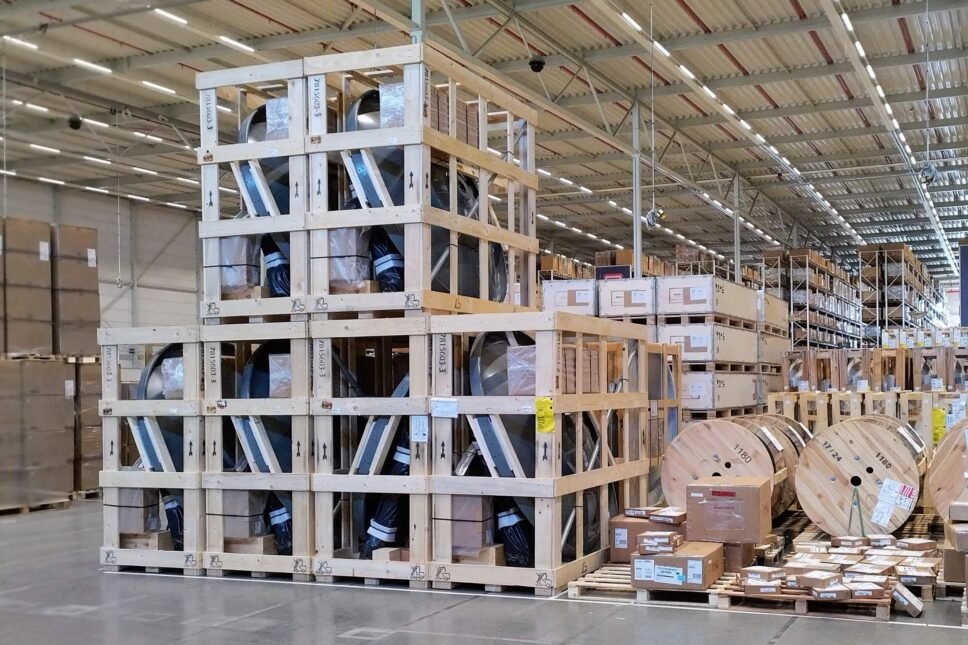Nokia: “Handling environmental issues well is a source of competitive advantage”

The network company Nokia is a global leader in environmental issues. When it set scientific climate targets in 2017, it was among the first 100 companies worldwide to do so. Nokia is now a trendsetter in the increasingly important areas of biodiversity and geodiversity. Pia Tanskanen and Jussi Isoaho from Nokia’s environmental team encourage all companies, no matter how small, to take environmental action. “It is much easier to shape your operations yourself than to respond to external requirements.”
Environmental work is more than just a demonstration of a company’s corporate responsibility; it can also boost competitiveness, make operations more efficient, help secure financing, and increase brand appreciation.
“I cannot even imagine what it would be like if nothing had been done about the environment. Our customers give us a score for corporate responsibility, which puts pressure on us at Nokia. Handling environmental issues well is a source of competitive advantage. Financiers and industry analysts also monitor how companies handle their responsibilities,” says Pia Tanskanen, Head of Environment, ESG at Nokia.
- Main products: advanced networking solutions, 5G technology, cloud services, digital transformation solutions
- Personnel around the world: Approximately 86,000 employees (2023)
- Personnel in Finland: Approximately 6,000 employees (2023)
- Net sales: Approximately EUR 24.9 billion (2022)
- Head office: Espoo, Finland, with operations in more than 130 countries
- Established: 1865
Nokia covers biodiversity in its environmental programme, which includes climate, biodiversity and geodiversity. These are interconnected and need to be in balance. Biodiversity refers to the diversity of living nature, while geodiversity includes the diversity of inanimate natural objects such as minerals and rocks.

“These have long been treated as separate issues, but it is important to understand that nature was created in balance. If one part of it is doing badly, it can affect the other parts. For example, global warming may render areas uninhabitable for certain species. A balance is the outcome of the interplay between these three aspects,” Pia Tanskanen says.
Aiming for zero emissions by 2040
The climate targets that Nokia set in 2017 included reducing greenhouse gas emissions and limiting global warming to 2 °C of pre-industrial levels, which is in line with the Paris climate agreement. In 2019, the company made its climate targets more ambitious, committing to a target of 1.5 °C. It now aims for zero emissions by 2040.
“People have developed a better understanding of the importance of the zero-emission target in terms of biodiversity in recent times. If climate issues are not addressed, they will become the biggest driver of change in biodiversity, overtaking the use of land and natural resources. If our planet heats up too much, large areas will dry out, and their biodiversity will change dramatically,” says Jussi Isoaho, an environmental specialist at Nokia.
“We can think of the climate globally. We all share one climate, but climate change could cause the biodiversity of a small area to change suddenly and irreversibly. Companies have gained much more knowledge about biodiversity, but complex issues still require much research.”
Nokia’s use of wood was a surprise
As a global company, Nokia affects the global climate, biodiversity, and geodiversity by using energy, metals, and plastics. On the other end of the scale, Nokia has a substantial handprint, as its technology and infrastructure enable digitalisation, which saves energy and natural resources in many ways.
When Nokia conducted a lifecycle analysis of its 5G base stations and expanded its scope to include land use that affects biodiversity, the results were surprising. As much as half of the biodiversity impact during the production of a base station arises from products made of wood, such as packaging pallets and cardboard boxes.
“One tangible observation can be made about packaging: there is no point transporting any unnecessary air on an aeroplane or ship. Efforts should be made to use smaller, more compact packaging—not just because of the costs, but also because of the environment,” Jussi Isoaho says.

Do not be scared by terminology and acronyms
The complex terminology and acronyms involved in environmental matters often mask simple, easy-to-understand things. Nokia’s environmental specialists emphasise that ambiguity should not cause alarm, even in small companies. A little common sense goes a long way. The most important thing is to start taking tangible action.
“Many small companies already measure and report their energy consumption, material use, and waste volumes. This helps them understand their environmental impact so that they can reduce it: Why is the electricity bill so high? Why are materials costing so much? The most economically efficient alternative is often good for the environment,” Pia Tanskanen says.
Tanskanen points out that companies know their industries and products better than anyone else and can ask about alternatives when they source services or materials. For example, when purchasing raw materials, one can quickly get an idea of which solutions would be best for the environment.

Jussi Isoaho gives the example of a company that uses a lot of aluminium in its products.
“If we begin using raw materials that contain even a small proportion of recycled aluminium, the environmental impact will immediately decrease significantly. Now, it is becoming possible to source metals made without carbon emissions. The information is out there if the company wants to find it. Companies need to have the will to do these things, and they are not just a one-person issue.”
Aluminium is also relevant to Nokia because it is used in new 5G products, among other things. Using recycled materials leads to lower climate emissions and less demand for mining production, thereby having a positive effect on geodiversity.
Action throughout the value chain
Pia Tanskanen emphasises resource and energy efficiency in environmental action and recommends examining the entire value chain, including the connections between different industries.
“We need to take action throughout the value chain: in every area of our operations, when we purchase raw materials and components from subcontractors, and when we talk to our customers. By looking at the value chain as a whole, we can probably identify dozens or even hundreds of things that we could do, both small and large.”
One line of code can have a global impact
Nokia designs and manufactures equipment that consumes electrical energy. Therefore, energy efficiency is a vital aspect of its environmental work.
“We have ambitious targets for reducing climate emissions in our operations. We operate in 120 countries; for example, it is not always easy to buy green electricity in all of them,” Pia Tanskanen says.
Tanskanen says that individuals have an excellent opportunity to do big things in their normal work. For example, if you can develop code that improves the energy efficiency of a device used worldwide, you are taking important environmental action.
Nokia’s tips for other companies: Getting started with biodiversity work
- Do a quick analysis and start today. Focus on the largest material flows and the related logistics. Talk to suppliers and customers openly. Others may have thought about the same things before. You can learn from each other.
- Focus on using resources efficiently. Reducing waste also affects living nature, even when it is difficult to measure or model directly.
- Be transparent about what you have already done. Mention actions that you expect to have a positive impact on biodiversity.
- Train personnel in environmental issues and ask people in your company to brainstorm. They have a lot of knowledge.
- For a tangible and enjoyable event, you could arrange a work party where employees can build bird boxes and put them up outside. This has become a very popular tradition going back several years at Nokia’s site in Oulu.

Large companies will be required to report
Next year, large listed companies will be obliged for the first time to report on their corporate responsibility work in accordance with the Corporate Sustainability Reporting Directive (CSRD). The new sustainability reporting rules aim to make companies’ corporate responsibility activities more transparent and their reporting more comparable. In the coming years, the obligation will gradually begin to apply to smaller companies.
Nokia’s specialists encourage everyone to engage in sustainability matters voluntarily and at an early stage.
“When big companies need to report first, the requirements trickle down to the smaller ones in the logistics and supply chain. Therefore, it is wise to be ready on time and respond soon enough to safeguard your competitiveness. If you have not taken climate targets or sustainability themes seriously, it may even be impossible to become a supplier for a large company,” Jussi Isoaho notes.
Pia Tanskanen says that paying attention to your company’s environmental action on time makes it easier to see the opportunities available to you.
“It is much easier to shape your operations yourself than to have someone come with a template and ask you to fill it in.”
Text: Mikko Viljanen
Photos: Liisa Takala, Tuuli Nikki
